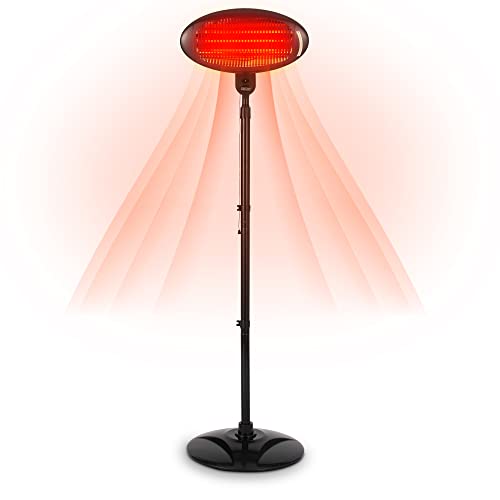It's True That The Most Common Patio Heat Lamp Electric Debate Doesn't Have To Be As Black Or White As You May Think

How to Choose a Patio Heat Lamp Electric
There are many options available when it comes to heating your patio. In contrast to propane heaters that require refills electric heaters can provide instant heat by simply flipping an switch or pressing a button.
These units also don't emit gasses that might be harmful to health. Some offer adjustable heat settings for varying distances.
Type of Heater
You can relax in your outdoor living space well into the evening and throughout the seasons by using the right patio heater. There are many kinds of patio heaters, such as freestanding propane and natural gas models as well as wall- or ceiling-mounted electric radiant heaters. Your choice is contingent on the size of your space, current power sources, and your personal preference.
The majority of patio heaters are powered by electricity or natural or liquid gas and emit heat via convection as well as radiant heating. The output of patio heaters is measured in watts which can be converted into British thermal units (BTUs) to provide a comparison. Certain models come with adjustable temperature settings that give you more flexibility.
Patio heat lamps incorporate the use of a burner that is mounted on a pole, and an open-pored screen that reflects flames and sends heat downwards to warm objects, people and furniture. Some come with a reflector above the burner that can be silvered to cut down the amount of heat that is lost upwards.

The most common type of patio heater is a gas patio heater is usually found in outdoor seating areas of bars and restaurants since they produce a lot of heat quickly and spread it evenly across all directions, making them ideal for warming tables. They can be portable and run from propane tanks or plumbed into your natural gas line which is more convenience and lower cost of installation, but requiring an ongoing cost of fuel.
A growing number of homes are fitted with natural gas lines, making these the perfect solution for those who prefer a gas-powered patio heater. They are easy to install, but require a specialized and functioning gas line in order to function in a safe manner. Natural gas heaters that are portable are available with extension hoses to help overcome this limitation, but they can pose a tripping danger and could create an additional fire hazard when not in use.
Safety
The majority of electric patio heaters are suitable for use in covered areas due to their ability for heat to radiate outward instead of upward toward combustible materials like the roof. However, they're not intended to be used on an open roof. The heater should be set at least 18" from the walls adjacent to it or 6" from the ceiling to prevent fire hazards.
Patio heaters made of propane and gas are generally only safe to be installed in enclosed areas and are protected by a durable cover that is designed for open-air use. The covers are typically made of fire-retardant fabric and have a roof that can be closed. These kinds of patio heaters have security concerns due to the fumes and flames they create. They should be placed away from items that ignite, such as curtains and chairs.
When installing an electric patio heat lamp or any other type of patio heater, be sure to adhere to the manufacturer's instructions and safety measures carefully. Be sure to choose a system with UL and CSA certifications, and read the owner's guide carefully. Make sure the heater is out of reach of children and pets. Some patio heaters that are freestanding, such as EUROM's, come with an automatic tipping safety that shuts off the device if it falls.
If Best patio heater electric is connected to natural gas lines it is important to examine the condition of the line on a regular basis and have it tested for leaks by a qualified professional. If the line has to be replaced, make sure to employ a licensed plumber. A professional will be able to determine if the line is properly routed or if it should be routed through an underground pipe. A professional will also be able to ensure that the heater for your patio is connected to an outlet that is GFCI-rated (ground fault circuit interrupter) to protect against electric sparks and fires.
Installation
The the height at which a patio heater is positioned determines the amount of heat it can radiate into the space. The heater should be positioned away from any surfaces such as wood and plastic that can deform. It is possible to mount the heater on a wall, structure or other surface using conventional mounting brackets. Certain models have a soft starter that lowers the peak current to protect your circuits.
